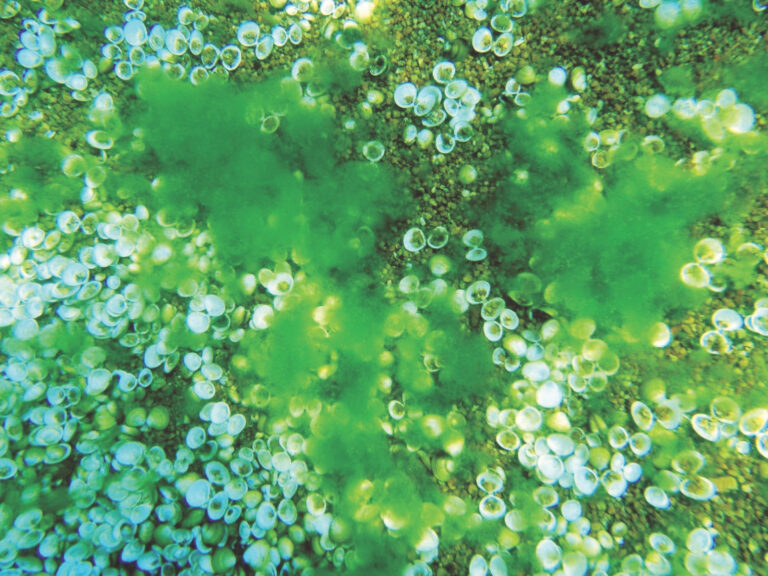Photo: UC Davis Tahoe Environmental Research Center is studying the link between the concentration of nutrients created by invasive Asian clams and algal blooms.
While out enjoying an afternoon on one of Lake Tahoe’s sandy beaches over the past few years, you might have noticed large mats of decomposing algae washing up or floating nearby. The lake’s famed blue waters are facing another threat while the battles of climate change and invasive species wage on — and it’s all very much connected.
Nearshore algae blooms are a burgeoning ecological threat to Tahoe. Not only do they impact the experience for beachgoers, but they also degrade water quality and, in some cases, pose a threat of toxicity.
Over the last 50 years, the rate of algal growth has increased sixfold, according to U.C. Davis Tahoe Environmental Research Center’s 2022 State of the Lake Report. Between 2021 and 2022 alone, the amount of algae growing in the lake jumped up 300%.
There are two general communities of algae in Tahoe: periphytic algae — the slimy green algae clinging to rocks — and the free-floating metaphytic algae.
“We’ve got the same amount of slime on our rocks as we had roughly in the early 80s,” explains Dan Segan, principal natural resource analyst at the Tahoe Regional Planning Agency. “The nuisance algae washing up on the beaches is a more recent occurrence.”
Though the algae is native, in the past, normal conditions have kept the population levels low. Tahoe is an oligotrophic lake, meaning it’s deep, cold, clear and low in nutrients that are needed to support large populations of aquatic plants, animals or algae.
But as the climate has become warmer, drier and characterized by extreme weather variability, the lake’s temperature has […]
Full article: www.sierrasun.com

